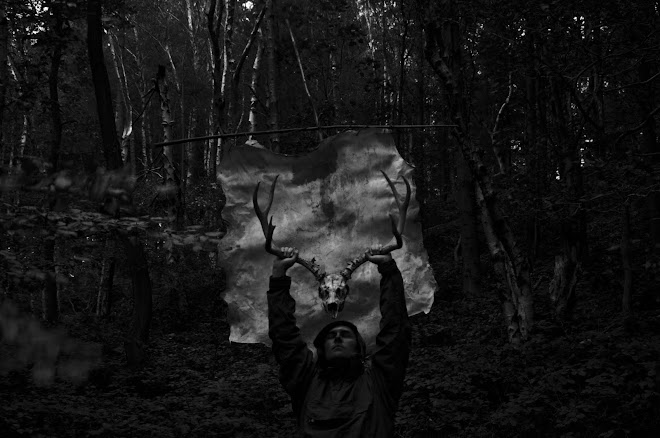


Across the stream and into the woods the blast of the wind was lessened and it almost felt comfortable. I was back in woods I have known since childhood and it felt safe and homely. I decided to pick up a game trail leading up the hill to the fields on the other side of the woods, I had often seen deer on this trail, once last year finding a group of 4 when I was out with my wife and two children and if the deer were not startled by the noise and smell given off by a reluctant woman walking in the woods with two small girls chattering and asking to be carried I had some chance of find them again today. A little way up the trail, as the wood changed from dark lines of crop-planted spruce into an open area of birch (Betulas pendula) and oak I found a small pile of very fresh roe deer droppings, still warm to the touch and still a fresh moist green colour. The droppings were clearly linked in a chain and lay in a neat pile amongst the needles and ground ivy. The animal responsible could not be very far ahead of me so I carried on slowly and with as much stealth as I could muster, scanning the woods, trying to look through the thickets into the deep covers but although I spent the next hour moving cautiously around the woods the deer was nowhere to be seen.
It was only the middle of the afternoon but already the light, which had never been bright, was beginning to fail. I was at the farthest point from home and decided to begin to make my way back, taking in as much woodland as possible and resolving to keep off the lanes and country roads. Dog walking couples passed below me on the woodland paths as I stuck to the deer trails, not even their dogs noticing me as they rushed on with their noses an inch off the ground. A man in a bright red coat and large furry hat walked the other way, but mindful of nothing but the path in front and his own thoughts. I crossed the stream at the footbridge to save the jump, took the steep zig-zagging path into the woods then at the first game trail struck off and left the path to the men in red coats and their dogs.
Immediately on leaving the trail I found a large skull half covered by grasses and leaves. The lower jaw was missing and the skull, although sound and in good condition was stained brown by its contact with the earth. By it’s size and the two massive canines it was obvious this was the skull of a carnivore, it lacked the thickness and massive wrap-around upper jaw section found on a badger skull which limited the field to only one other large native carnivore – Vulpes vulpes, the red fox. I looked at the skull closely, noting it’s size and prominent post-orbital spurs before unclipping the mini hatchet from my belt and cracking out the two massive canine teeth. This was easier said than done but with a little brute force and ignorance the teeth came free and were pocketed for inspection at a larger date. I also made a mental note to pack some large ziplock bags to recover large specimens.
A short way further up the trail another, narrower and smaller skull lay in the middle of the path, in a more advanced state of decay but still with the visible post-orbital spurs. With it’s large empty eye sockets and long narrow profile in looked mournful and folorn, more so when I hung it on a nearby tree branch to look down on the game trail it had once hunted. Turning around to continue walking I almost stepped on the carcass of a red fox lying directly in the trail. It was sodden and wet, it’s brush beginning to rot down into the leaf litter, the saw-edge of it’s spine poking through the red pelt. I stood looking at it for some time, the mouth was open and the sharp white teeth gleamed in the fading light. It was not a small animal, possibly the dog that I had tracked in September along this very trail, the animal that left behind such thick and meaty scats that they were infested with insect larvae. Lying on it’s side beside the game trail it was plain that the animal had not met a natural death, we were very close to the back lot of Cold Stream Farm with it’s pheasant pens and hen crees and it was easy to imagine Stott or one of his hands shooting or poisoning the pest. The sky was now darkling and even out in the fields the light was fading fast. Looking at the sad sodden carcass of the fox as it returned to earth had not cheered my spirits and even the tumbling jumping flight of a dozen squeaking, peeping long-tailed tits (Aegithalos caudatus) as they foraged on mass along the hawthorns and hazels that marked the boundary of the wood and fields raised little more than a smile. It was cold and wintry, the woods were dark and saturnine, the Spring was being held at bay and would not be here for many weeks.
Top: the droppings were clearly linked in a chain
Middle: By its size and the two massive canines it was obvious this was the skull of a carnivore
Bottom: the sadd sodden carcass of the fox


No comments:
Post a Comment